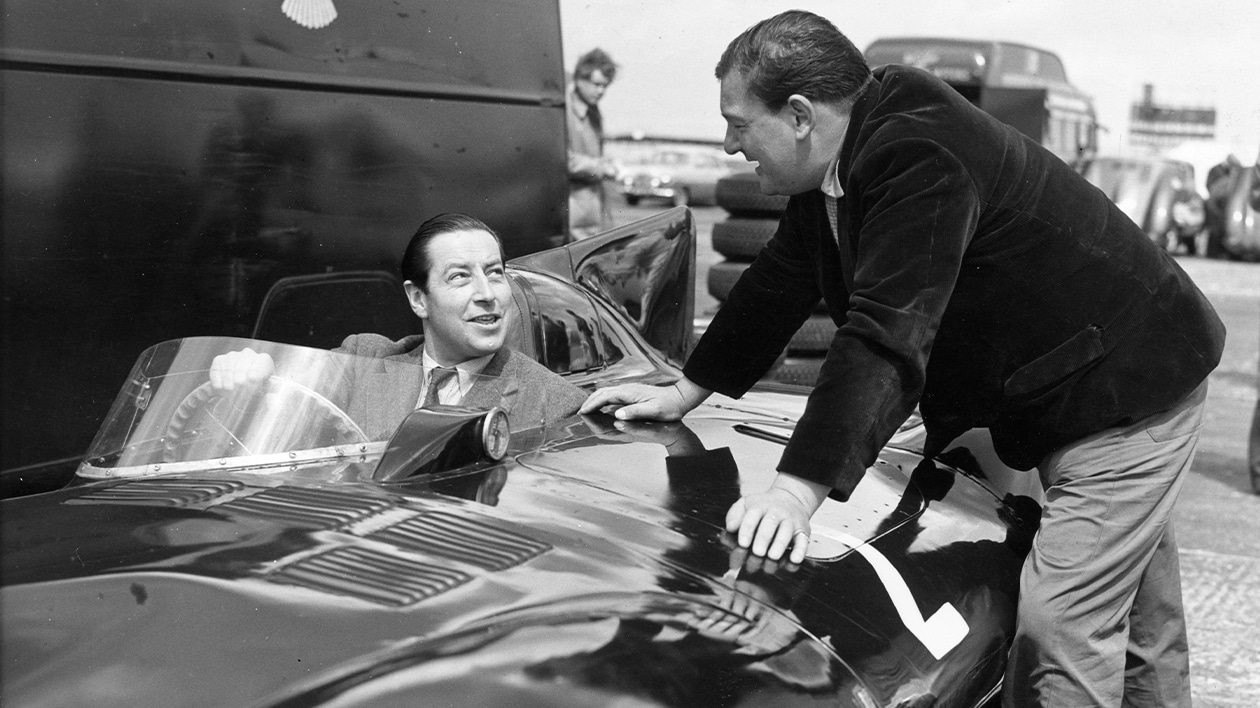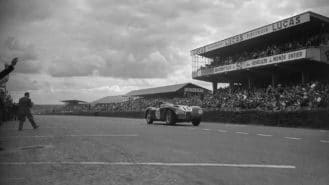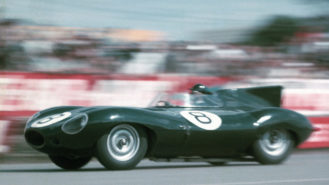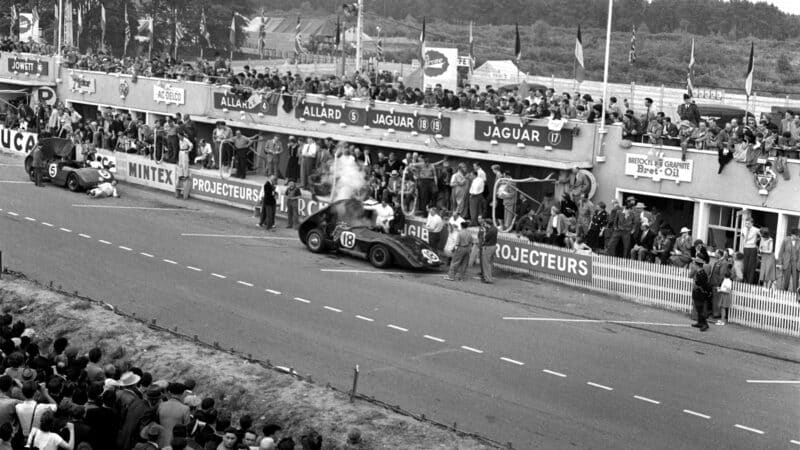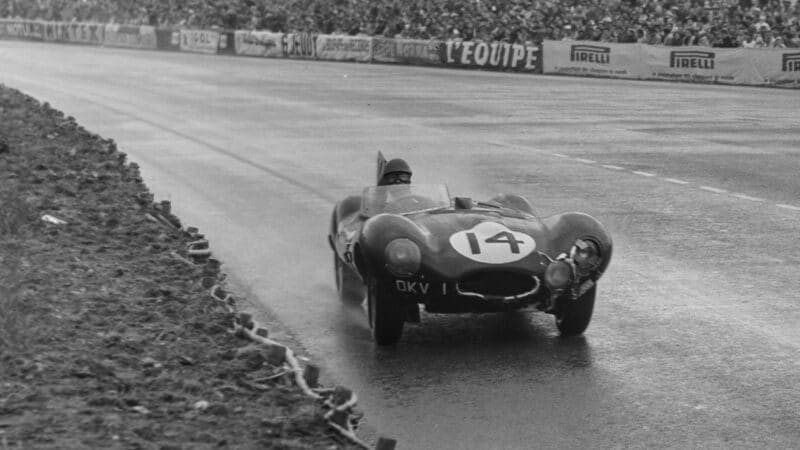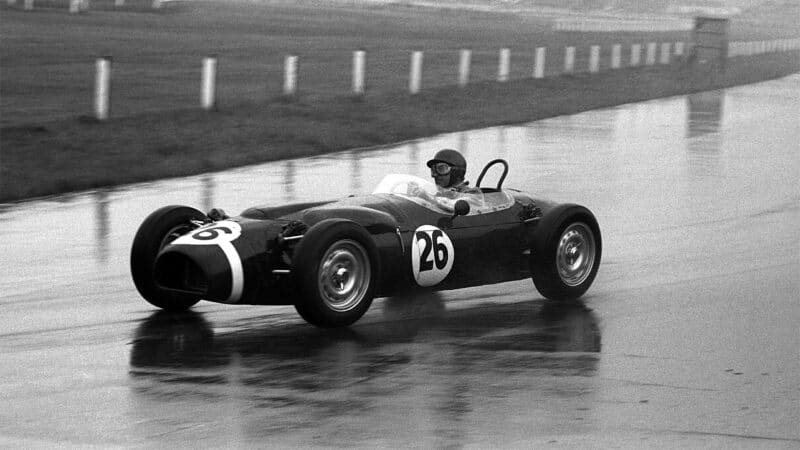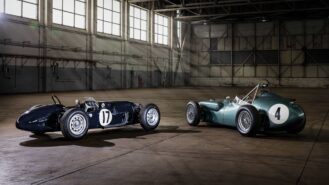A.P.R Rolt was born shortly before the end of the First World War, firing an early enthusiasm for matters mechanical long before he was ever old enough to hold a driving licence. His family lived for a time on a farm in North Wales and the young Rolt bounced around the farm tracks “in an old Singer and an early G.N.”, demonstrating sufficient enthusiasm for motoring as was necessary to swing his parents round to providing him with a Morgan three-wheeler before he left for Eton. One was permitted to drive three-wheelers at the age of 16, so this willing workhorse was immediately put to work in trials; “it wasn’t particularly suitable with that two-wheel-front, one-wheel rear arrangement. But that’s all there was, so I made do.” He confesses that, as a young boy, he often spent hours sitting by the roadside near Maidenhead watching for an interesting car to appear.
These schoolboy watches by the roadside were often sustained in the company of Lance Macklin, a face he was later to meet regularly on the circuits of Europe once the war was over. When the writer, later quizzing Major Rolt on the subject of D-type Jaguars, remarked that these cars were his personal favourites when he was growing up, our subject agreed with the theory that one forms one’s basic criteria by which one judges everything later in life when one is young and impressionable. So, although Major Rolt has a particular soft spot for the D-type — “remember, it was only a 3.4-litre engine… I think Duncan (Hamilton) managed to wind one up to almost 190mph at Agadir or somewhere like that” — his personal favourites were the 2.8-litre Roesch Talbots. “These were the cars I really loved. As far as I was concerned, Bentleys were just tanks, Bugattis too finicky. Those Talbots always won the team prize. You can’t imagine how I envy Anthony Blight, owning those team cars of his!”
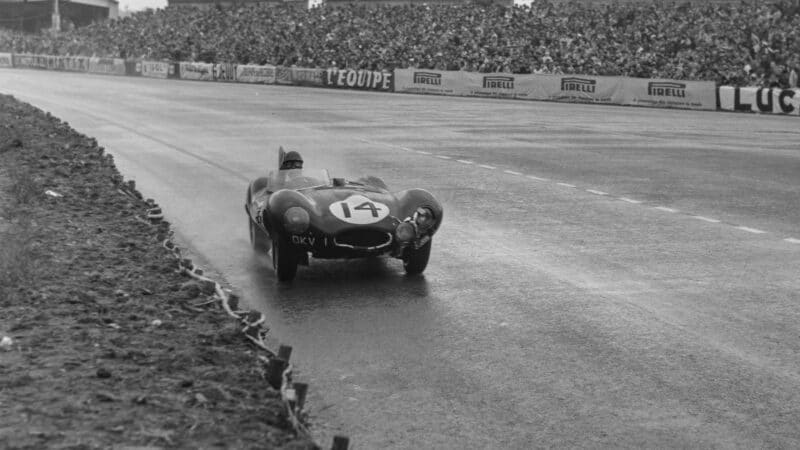
The Jaguar D-Type would be a career-favourite of Rolt’s — but he kept a soft spot for his beloved Talbots
Getty Images
The days of car-watching were soon over and Rolt’s ambitions to go motor racing remained unfulfilled. His first “real” motor car was a 1936 Triumph Southern Cross: “Ex-Donald Healey, overhead inlet, side exhaust, straight six. Do you know, it would do over 110mph when you wound it right up.” The Triumph was duly dispatched to Spa for the 24-hour sports car race shortly alter Rolt’s seventeenth birthday where he achieved a worthy fourth place in the 2-litre class. “First, second and third were a team of German Adlers; that was real Teutonic efficiency for you. But I’d actually competed in the same race as Dick Seaman, he was driving a Lagonda which gave me a great thrill to say the least.” Unfortunately, a slight disagreement with the local constabulary in rural Wales as to the precise speed achieved on one occasion with his later, and rather rare, Triumph Dolomite was responsible for his reduced programme in 1937, even though the RAC were not obliged to suspend competition licences automatically!
By this time Tony Rolt had moved to the Royal Military College at Sandhurst, duly passing out and being commissioned into the Rifle Brigade before World War II broke out. But, before that unfortunate turn of events, Rolt had purchased “Remus” from Bira for the 1938 season and embarked on a very ambitious programme of racing. It was during the winter of 1938/39, when searching for more speed and road-holding from the E.R.A., that he met the rugged and rough former motorcyclist Fred. W. Dixon who had already built up a substantial reputation for preparing and driving Rileys.
Dixon agreed to carry out the preparation of Rolt’s E.R.A. while also mentioning the fact that he’d prepared plans for a four-wheel-drive record-breaking car. Rolt took a great interest in this project, but managed to persuade Dixon that his ideas would be better if they were applied to circuit racing rather than record breaking. By this stage, very little development had been done in the sphere of four-wheel drive. Back in 1903, Spyker had built such a car which, powered by an 8.6-litre engine, had won a Birmingham Motor Club hillclimb. In 1932, Ettore Bugatti built his hillclimbing pair of four-wheel drive Type-53s and Rene Dreyfus had actually established a new record for the La Turbie hillclimb near Nice, being the first competitor ever to ascend the 6-kilometre course at more than 100kph.
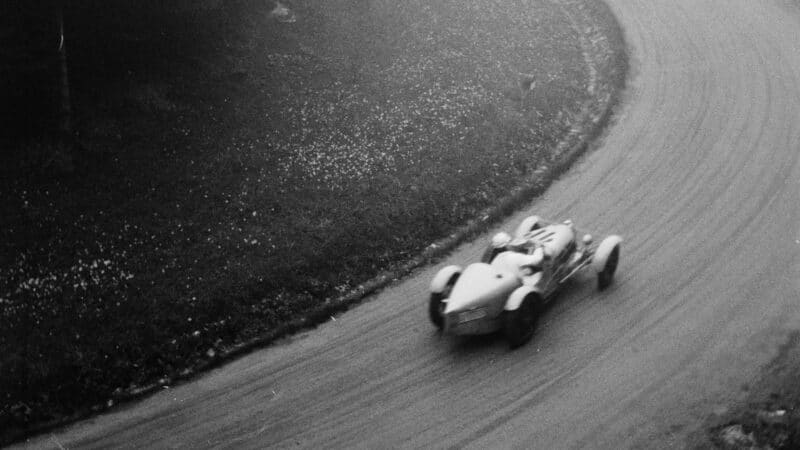
The Bugatti Type-53
Getty Images
It was eventually agreed that Dixon would prepare a four-wheel-drive chassis powered by Rolt’s E.R.A. engine, but although plans were drawn up for this project in 1939, the onset of war meant that they had to be shelved. Nevertheless, the two men formed a small company called Dixon-Rolt Ltd with the intention of examining such systems and Rolt spent a lot of time attempting to persuade the war office that they would be ideal for military vehicles. However, they were not particularly interested and the matter was left in abeyance after Rolt was captured at Dunkirk and Dixon just got on with his work for the war department on other matters.
After the war, Rolt returned from his enforced sojourn in the notorious Colditz, where his most famous exploit had been to instigate the building of a glider for an escape attempt from the Castle roof, to find Dixon still hard at work in his small Reigate factory and he retired from the army in 1948 to resume a career in motor racing “despite my parents urging me to take a choice between the army or racing, emphatically pointing out that motor racing could not be made to pay. Of course, I was absolutely determined to prove otherwise.” Rolt’s first post-war mount was the famous Alfa Romeo Bimotore, the twin-engine record breaker in which Nuvolari had bravely established some 200mph-plus times on an Italian autostrada in 1935. However, this car was now minus its rear engine, owing to an overwhelming inclination to eat up its rear tyres at the rate of one set every ten miles or so.
